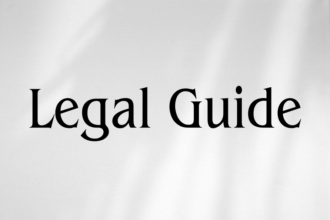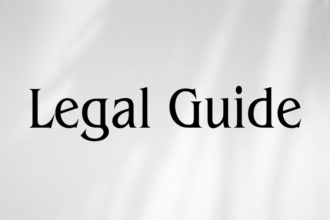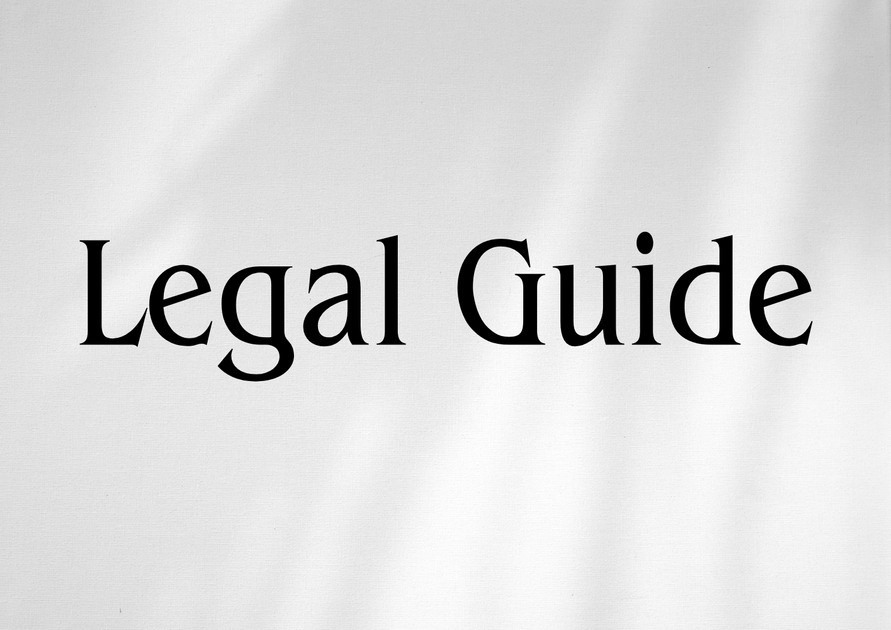Introduction
Terminating employment relationships within the Dubai International Financial Centre (DIFC) is a subject of considerable practical and legal significance for organizations operating in the United Arab Emirates. The distinct legal framework of the DIFC – separate from UAE Federal Labour Law – sets out unique statutory obligations, rights, and procedures. This is especially relevant in the context of recent updates to the DIFC Employment Law (DIFC Law No. 2 of 2019 as amended by Law No. 4 of 2020), which reflect evolving best practices in global employment standards and aim to bolster DIFC’s reputation as a world-class business hub. For business leaders, HR professionals, and legal practitioners, understanding the current legal landscape, pitfalls of non-compliance, and effective risk management is vital in ensuring seamless workforce transitions, maintaining reputation, and avoiding litigation. In this article, we offer in-depth legal analysis, actionable guidance, and compliance strategies, enabling your organization to manage terminations in the DIFC with confidence and in full accordance with the latest legal requirements.
Table of Contents
- Overview of DIFC Employment Law and Applicability
- Legal Grounds and Justification for Termination
- Notice and Process Requirements
- Compensation, End-of-Service Benefits, and Payments
- Comparing DIFC Employment Law Pre- and Post-Amendments
- Case Studies and Practical Scenarios
- Risks of Non-Compliance and Compliance Strategies
- Best Practice Recommendations for UAE Employers
- Conclusion and Forward Outlook
Overview of DIFC Employment Law and Applicability
Legal Framework and Scope
The DIFC operates under its own independent legal system, governed by the DIFC Employment Law (DIFC Law No. 2 of 2019, as amended). Unlike companies established onshore or in other UAE Free Zones, DIFC entities are subject to a bespoke regime that reflects an Anglo-Saxon legal heritage, emphasizing transparency and dispute avoidance. The law covers both employers and employees working in the DIFC, regardless of their nationality.
The major UAE-wide updates in 2022, such as Federal Decree-Law No. 33 of 2021, do not apply directly to DIFC entities. Instead, the financial free zone continues to chart its own course, subject to periodic amendments and expansions to keep pace with international best practices and stakeholder expectations. Official resources, including the DIFC Legal Database, provide comprehensive law texts for reference.
Recent Amendments and Legal Updates
Recent amendments (notably Law No. 4 of 2020 and accompanying Guidelines) have clarified and expanded employers’ obligations regarding termination process, employee compensation, and record-keeping.
- Explicit requirements for notice, fair treatment, and due process at the end of employment
- Revised rules for end-of-service gratuity and alternative qualifying schemes (e.g., DEWS)
- Greater clarity on discrimination, redundancy, and mutual separation scenarios
Staying abreast of these changes is crucial for HR compliance in 2025 and beyond.
Legal Grounds and Justification for Termination
Permissible Grounds for Termination
DIFC Employment Law distinguishes between termination with cause and without cause:
- With Cause: Gross misconduct, serious breaches of contract, or persistent underperformance (after due warnings and process). Examples: theft, fraud, violence at work, severe confidentiality breaches.
- Without Cause: At any time, provided statutory notice is given and the termination is not based on discriminatory grounds or retaliation. Examples: corporate restructuring, redundancy, or organizational realignment.
Terminations must never be based on prohibited grounds, such as gender, race, religion, nationality, or whistleblowing, consistent with the anti-discrimination provisions (DIFC Law Art. 59).
Redundancy and Economic Dismissals
Unique to the DIFC regime is the clear provision for redundancy: employers may terminate for ‘legitimate business reasons’, but must prove that the role is genuinely redundant and that the process was fairly conducted. Documentation, fair selection criteria, and transparent communication are key to withstanding legal scrutiny.
Termination by Employee
Employees may also resign with notice, or immediately in cases of serious employer default (e.g., non-payment of wages, unsafe work conditions, material breach).
Notice and Process Requirements
Statutory Notice Periods
Statutory notice is a cornerstone of DIFC employment relations. Under DIFC Law (Art. 62), the minimum notice requirements are:
| Continuous Employment | Minimum Notice Period |
|---|---|
| Less than 1 month | No statutory notice required |
| 1 – 5 months | 1 week |
| 6 – 11 months | 2 weeks |
| 1 year or more | 1 month |
Employers and employees retain the flexibility to agree on longer notice in employment contracts, provided they do not fall below statutory minima.
Process Best Practices
- Written Notice: Notice must always be provided in writing, outlining the date and reason for termination (where relevant).
- Garden Leave: Often used in senior roles – employees remain employed but are not required to work, while still receiving pay and benefits.
- PILON (Payment in Lieu of Notice): Employer may opt to pay the employee instead of requiring service for the full notice period.
Visual Suggestion: A process flow diagram illustrating steps from internal review, documentation, written notice, exit interviews, to final payments.
Exceptions to Notice Requirement
Summary Dismissal: For serious misconduct, immediate termination without notice is lawful, but only if the incident(s) are well-documented and the employee has had a right to respond. Employers carry the legal burden of proof and face significant exposure for wrongful summary dismissal.
Compensation, End-of-Service Benefits, and Payments
Mandatory Final Settlements
On conclusion of employment, DIFC Law mandates prompt payment of all outstanding sums (Art. 66), including:
- Outstanding salary and allowances
- Unused annual leave (pro-rata payout)
- End-of-Service Gratuity or Qualifying Scheme benefits (see below)
- Other contractually owed benefits (e.g., bonuses, expense reimbursements)
Payments must be made within 14 days of termination, failing which employers risk penalties and claims for compensation.
End-of-Service Gratuity and DEWS
The old model of one-off end-of-service gratuity (based on final basic salary and length of service) was replaced in February 2020 by the DIFC Employee Workplace Savings (DEWS) scheme. Broadly:
- Employers must make monthly contributions into a qualifying savings scheme (DEWS or equivalent)
- Traditional gratuity accrues only on unremitted periods prior to February 2020, unless employer is exempt
- DEWS provides greater transparency, portability, and aligns with global retirement standards
Employees leaving employment are entitled to withdraw their DEWS balance, plus any outstanding dues.
| Element | Pre-Feb 2020 (Old Law) | Post-Feb 2020 (Amended Law) |
|---|---|---|
| Gratuity Basis | Lump sum on termination | Monthly scheme contributions (DEWS/QSP) |
| Accrual Rate | 21 days salary per year (first 5 years), 30 days thereafter | Monthly contribution, 5.83% (first 5 years), 8.33% (thereafter) |
| Portability | Non-portable, paid only on exit | Flexible, employee can manage funds on exit |
Other Compensatory Elements
Depending on facts and circumstances, employees may also claim for:
- Compensation for Unfair Dismissal: Up to one year’s salary, if the termination was unlawful or discriminatory
- Damages for Notice or Contractual Breaches
Structured exit settlements, including confidentiality agreements, non-compete enforcement, and negotiated departures, require careful legal drafting to ensure enforceability in the DIFC Courts.
Comparing DIFC Employment Law Pre- and Post-Amendments
Recent amendments have modernized DIFC’s employment regime, significantly impacting termination procedures, end-of-service benefits, and dispute resolution. The following table provides key comparisons:
| Aspect | Before (Pre-Law No. 4 of 2020) | After (Law No. 4 of 2020+) |
|---|---|---|
| End-of-Service Benefit | Lump sum gratuity only | Monthly DEWS contributions; portability |
| Notice Process | General requirements, less specificity | Detailed notice, written reasons, process clarity |
| Redundancy | Unclear/limited | Explicit redundancy provisions, due process |
| Discrimination/Retaliation Protections | Limited | Broader & stronger protections, anti-retaliation |
| Late Payment of Final Dues | No penalty | Compensation of employee’s daily wage (max 6 months) as penalty |
Visual Suggestion: A comparative penalty chart for late compensation payments, pre- and post-amendment.
Case Studies and Practical Scenarios
Case Study 1: Corporate Restructuring and Lawful Redundancy
An international bank in DIFC undergoes digital transformation, automating several administrative functions. Staff in redundant roles receive:
- Written, detailed notice of redundancy with legitimate business rationale
- Consultation meetings to discuss possible redeployments
- Correct notice period or pay in lieu
- Payment of accrued leave, salary, and DEWS contributions within 14 days
Result: Minimal disputes due to transparent process and adherence to law.
Case Study 2: Summary Dismissal Controversy
A DIFC-based private equity firm summarily dismisses an employee for “poor attitude” but fails to document prior misconduct or issue warnings. The employee claims wrongful dismissal and the Court awards:
- Compensation for full notice period
- Additional punitive damages for lack of due process
Key lesson: Employers must rigorously document misconduct and provide opportunity for employee rebuttal.
Case Study 3: Contractual Termination vs. Statutory Minimums
An expatriate director’s contract specifies a 2-month notice period – longer than the statutory minimum. Upon termination, the director receives only 1 month’s pay. She successfully claims for contractual damages covering the missing month, as contractual terms exceeding statutory minimums must be honored.
Risks of Non-Compliance and Compliance Strategies
Legal and Financial Exposure
Non-compliance with DIFC employment law, particularly regarding terminations, can result in:
- Claims for unfair dismissal or discrimination
- Court-ordered compensation, including daily wage penalties for late final payments (up to 6 months)
- Reputational damage and regulatory scrutiny
- Remedial orders (e.g., reinstatement, fines, or compliance directives)
Robust internal processes, clear documentation, and timely legal consultation are vital risk mitigants.
Compliance Checklist for Terminations in DIFC
| Requirement | Check |
|---|---|
| Identify lawful grounds for termination and avoid prohibited bases | ☑ |
| Provide written notice (as per law/contract) | ☑ |
| Pay all final dues within 14 days (salary, leave, gratuity/DEWS) | ☑ |
| Document the entire process, including reasons, employee communication, and exit meeting | ☑ |
| Consult with legal advisors on complex or high-risk exits | ☑ |
| Retain compliance records for statutory periods | ☑ |
Visual Suggestion: Accessible compliance checklist ready for HR teams.
Best Practice Recommendations for UAE Employers
- Review contracts annually: Ensure employment contracts are regularly updated in line with the most recent DIFC Law and regulations.
- Implement structured termination protocols: Set out clear steps for investigation, warnings, and documentation, especially for terminations ‘with cause’.
- Train managers and HR: Provide ongoing training on proper termination processes and anti-discrimination obligations.
- Embrace DEWS compliance: Regularly audit DEWS contributions and provide transparent, accurate reporting to employees.
- Obtain specialist advice: Engage qualified legal counsel early in potential dispute scenarios to mitigate risks and exposure.
- Maintain confidentiality and sensitivity: Handle exits with discretion to protect company reputation and employee dignity.
Proactive compliance is less costly than litigation or reputational harm. The DIFC’s evolving regime rewards transparency, fairness, and best practice HR governance.
Conclusion and Forward Outlook
Workforce transitions are inevitable for dynamic organizations, particularly in the fast-evolving DIFC ecosystem. Legal and regulatory developments – especially the advent of the DEWS scheme and enhanced anti-discrimination protections – underscore the imperative for DIFC employers to prioritize compliance, transparency, and ethical conduct in employment exits. Meticulous process adherence, robust recordkeeping, and a proactive approach to legal updates will be decisive in minimizing risk and cultivating trust with workforce and regulators alike. In the next few years, we expect further refinements to employment regulation, continuing DIFC’s trajectory as a benchmark for global best practice in workplace law. Our advice: invest in regular HR audits, cultivate a compliance culture, and engage expert counsel before embarking on sensitive terminations – ensuring your organization remains both competitive and fully aligned with 2025’s legal landscape.
For tailored legal consultancy on employment matters in DIFC or the wider UAE, contact our specialist team for strategic advice and risk management solutions.




